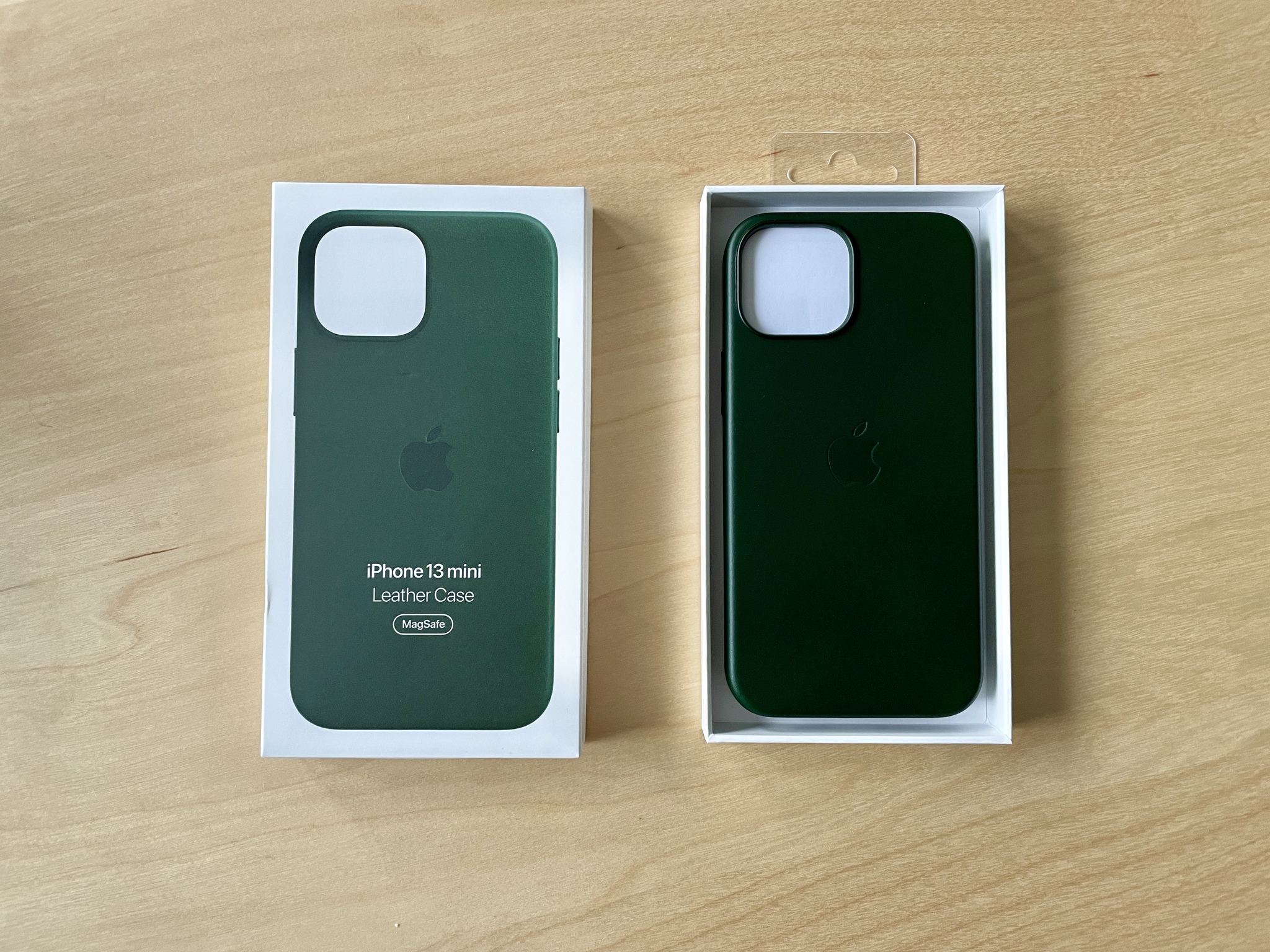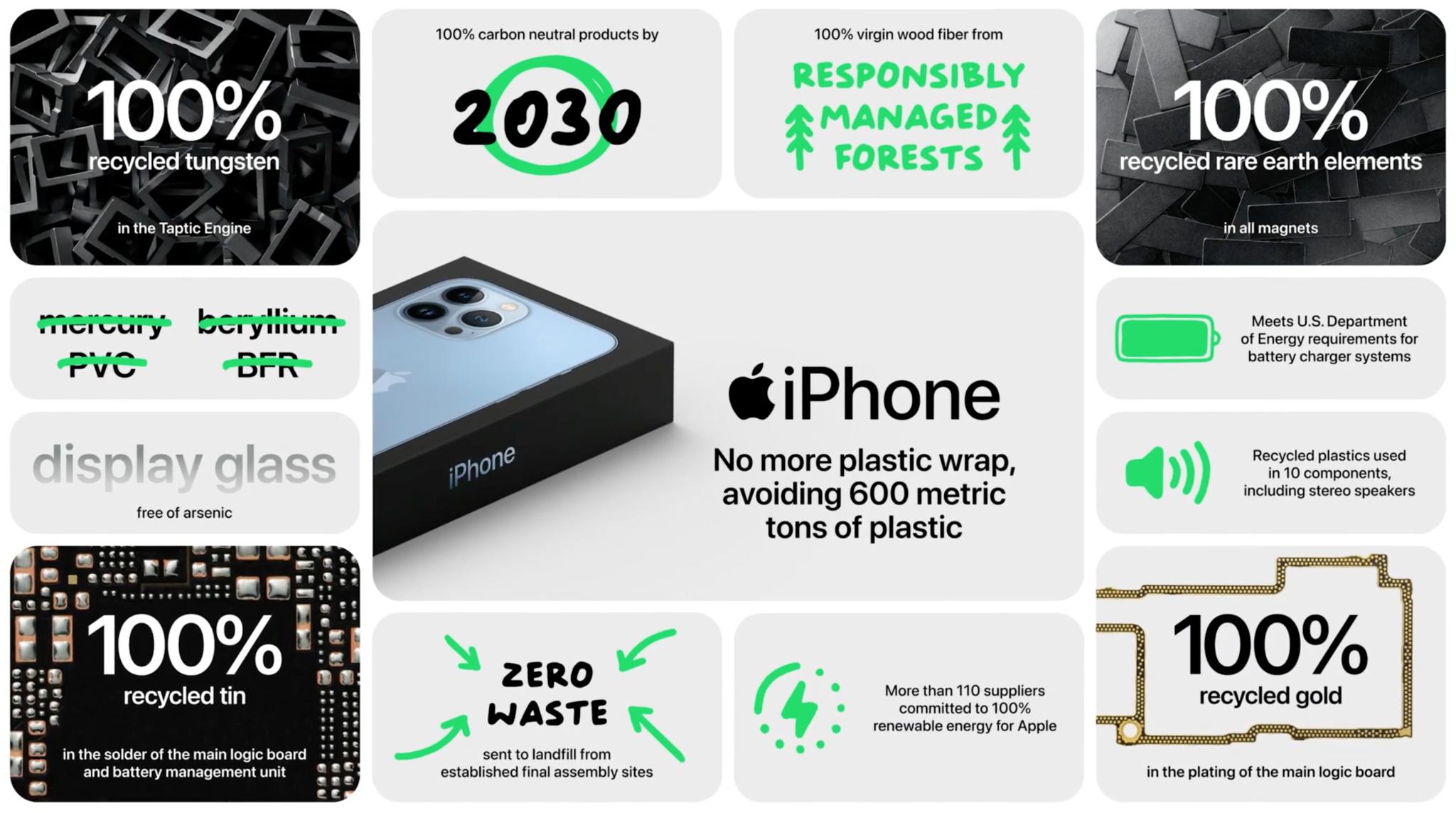

Apple is well-known for its lofty environmental goals and wanting to leave the world better than they found it. The company is often praised for its use of renewable energy in its stores, corporate offices, and data centers, as well as its focus on closing the loop when it comes to material used to manufacture its products.
There's no denying that Apple is a leader in this space. The company pays special attention to the environment and its efforts to minimize the environmental impact of its products every time it unveils a new device, something other brands should copy.
Take the recently-released iPhone 13 lineup, for example. The new devices are undoubtedly the best iPhone models ever when it comes to the environment. Apple has ditched plastic from their packaging completely, avoiding the use of 600 metric tons of plastic, and now use 100% recycled tin for the solder of the main logic board and battery management unit plus 100% recycled rare earth elements in magnets like those used for MagSafe.
It's also laudable how Apple is dragging along its suppliers, with 110 of Apple's partners now committing to use 100% clean energy as Apple continues to clamp down on emissions throughout its supply chain.
One aspect of Apple's product lineup no one appears to be looking at, though, is the use of leather. Environmentally, leather is extremely damaging, and it's surprising to me that Apple has not pursued more eco-friendly alternatives.
Apple's leather lineup

Apple has a long history with leather, having made a variety of accessories. Right now, in Apple's product lineup, it has several leather items, including iPhone cases, folios, and sleeves, Apple Watch bands, iPad Smart Covers, MacBook sleeves, MagSafe wallets, and AirTag key rings.
These are all supplementary to its hero products, but they are often sold as add-ons when picking up a new phone or tablet. A good case is usually the first accessory purchase a customer will make to protect or personalize their device, so it makes sense to up-sell your own at the point of purchase. Apple even went into great detail when the Apple Watch first launched about the leather it used for the initial roster of bands.
Master your iPhone in minutes
iMore offers spot-on advice and guidance from our team of experts, with decades of Apple device experience to lean on. Learn more with iMore!
Of course, it's nigh on impossible to discern what proportion of Apple's $8.8 billion in 'Wearables, Home and Accessories' revenue last quarter were these types of accessories. That whole category made up only 11% of Apple's quarterly revenue for Q3, with iPhone accounting for almost half the revenue, so it's comparatively small fry. But, when we're talking Apple-sized numbers, even a slice of its business can have a considerable effect.
Leather and the environment
Ultimately, leather as a material is at odds with Apple's stated goal of achieving net carbon neutrality by 2030. Raising animals for leather requires a tremendous amount of food production, grazing land, water, and fossil fuels. Animal agriculture also produces methane and nitrous oxide emissions, both of which are leading contributors to climate change.
Contrary to popular belief, leather is not a by-product of the meat industry. As a profitable business in its own right, it is at least a co-product meaning the impact of raising animals for their skin should not be left out of the conversation with some animals being raised for their skin specifically. Turning cowhide into a usable material requires a lot of energy and potentially hazardous chemicals, too.
Leather as a material is at odds with Apple's environmental goals.
According to the Sustainable Apparel Coalition, who developed the respected Higg Materials Sustainability Index, cow skin is the third most environmentally impactful fashion material so it's a wonder why Apple hasn't sought alternatives for its products. Apple did not reply to a request for comment on its use of leather and potential plans to replace it with alternative materials.
ECCO, the only leather manufacturer named on Apple's supplier list, has joined the company's Supplier Clean Energy Program, though it did not respond to request for comment as to what parts of its leather production were covered by the commitment to use 100% renewable energy, i.e., just the cutting and tanning process or the animal's lifespan, too.
Apple does not tend to name other leather manufacturers or tanneries outside of its Hermès Apple Watch band lineup, instead using phrasing like "specially tanned and finished European leather," so it's difficult to assess how much of its leather for accessories is provided by ECCO or other suppliers.
Regardless, leather is one area of Apple's supply chain where the company seems oblivious, at least from the outside, to a material's impact on the environment.
Supply and demand
As with most things in life, it comes down to supply and demand. Apple is less incentivized to change something that people continue to buy, so it's on the consumer to vote with their wallet. If you care about the environment, I'd argue that you need to ditch leather. If enough people do, alternatives will follow.
Apple is far from the only company making leather cases for iPhone, but I'd argue that Apple's pro-environment stance is undermined in part by its continued use of the material.
If Apple released a case of the same quality made from plant-based leather, I'd buy it in an instant. Until then, I'll continue to buy from brands that make more sustainable alternatives.
Would you like to see Apple ditch leather, or are you happy with the current crop of Apple accessories? Let me know in the comments.
Adam Oram is a Senior Writer at iMore. He studied Media at Newcastle University and has been writing about technology since 2013. He previously worked as an Apple Genius and as a Deals Editor at Thrifter. His spare time is spent watching football (both kinds), playing Pokémon games, and eating vegan food. Follow him on Twitter at @adamoram.

